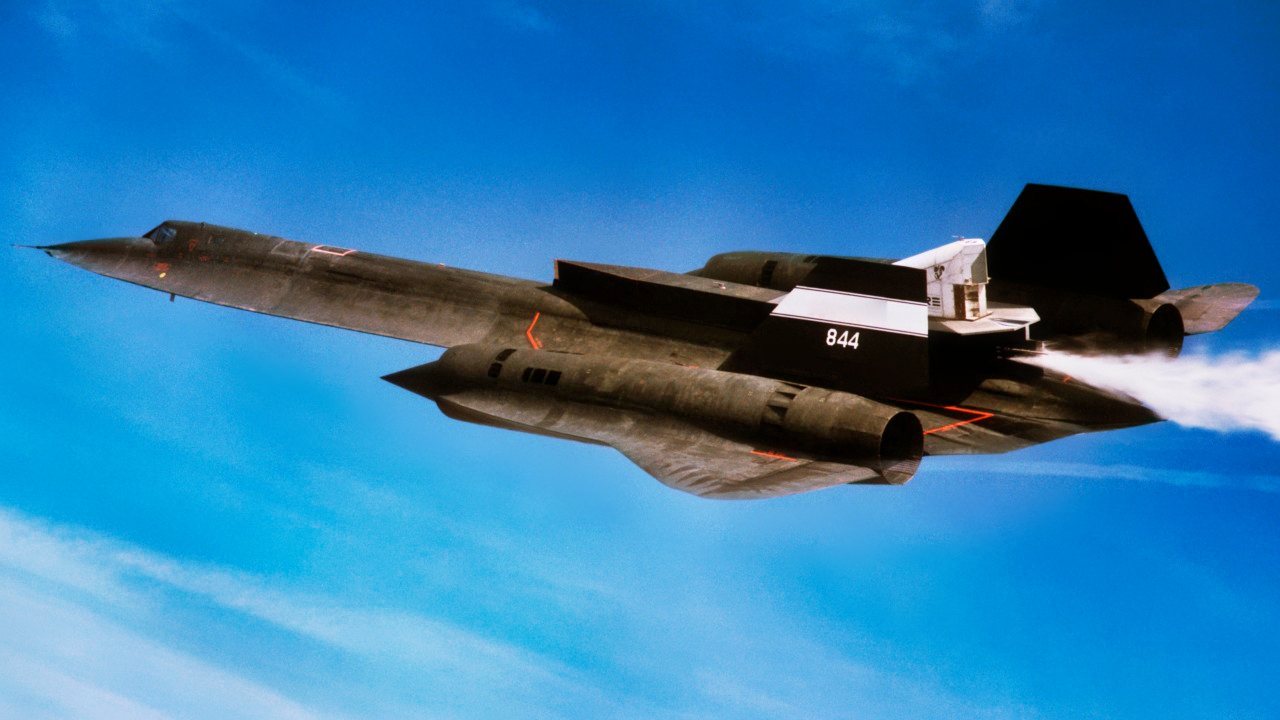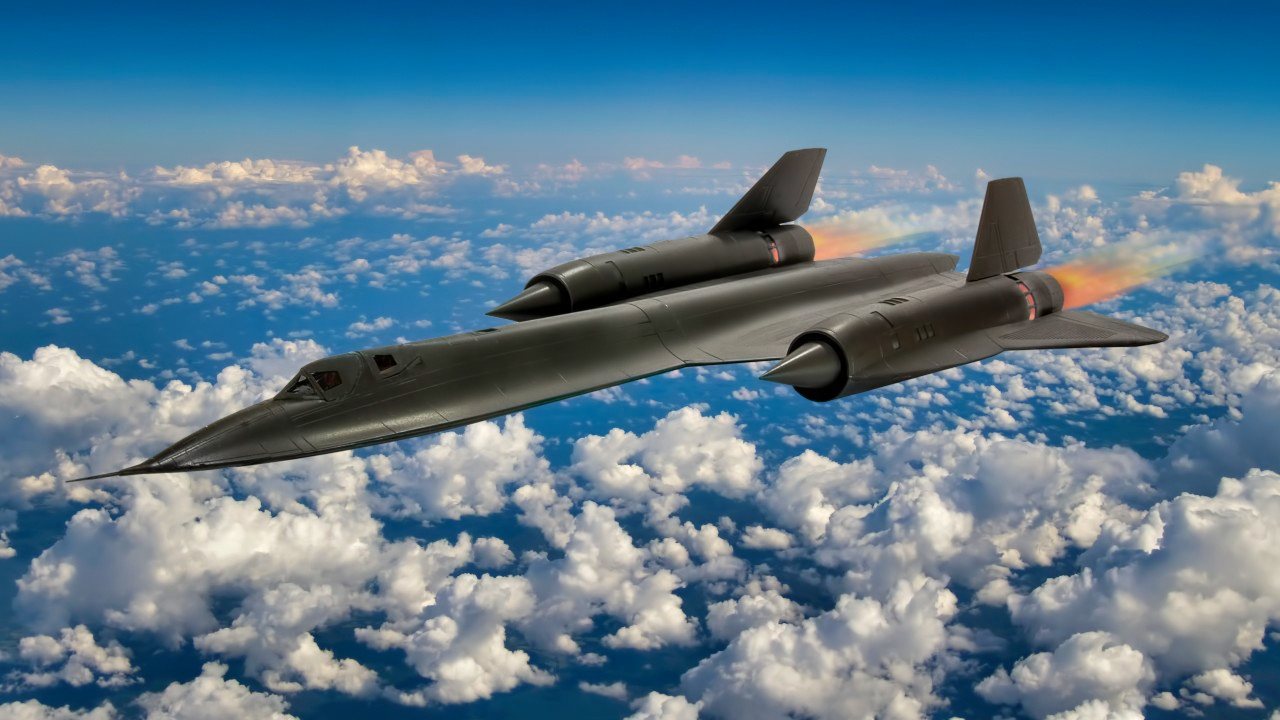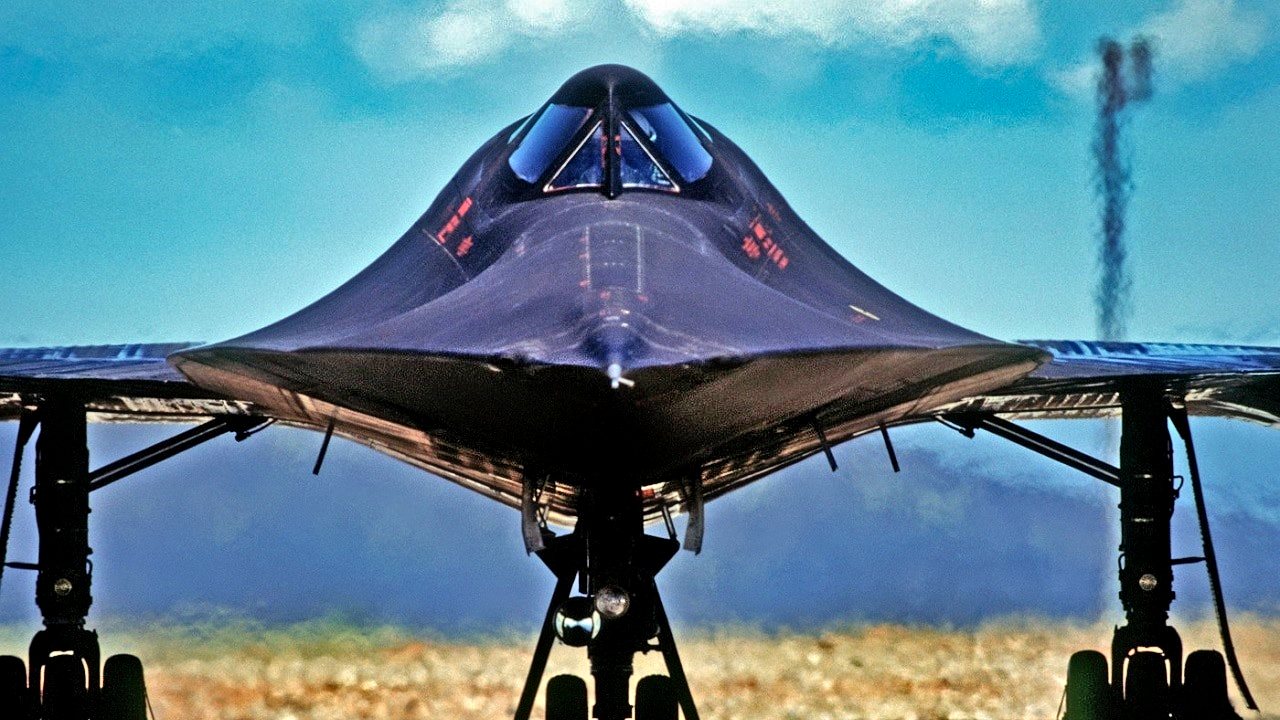The SR-71 Blackbird Beat 4,000 Missiles (But What About the F-14 Tomcat?)
The SR-71 Blackbird, known for being the fastest crewed jet in history, evaded over 4,000 missiles during its service. However, in training exercises, it faced simulated defeats against U.S. F-15 Eagles and F-14 Tomcats, which were stacked with advantages.
What You Need to Know: The SR-71 Blackbird, known for being the fastest crewed jet in history, evaded over 4,000 missiles during its service. However, in training exercises, it faced simulated defeats against U.S. F-15 Eagles and F-14 Tomcats, which were stacked with advantages.

-Despite these results, when the Blackbird pilots dropped the rules, no fighter could match the SR-71’s Mach 3+ speeds and high-altitude dominance.
-These exercises, designed to challenge America’s best fighter pilots, ultimately showcased the Blackbird’s superior capabilities, solidifying its reputation as an unmatched legend in aviation history.
The SR-71 Blackbird: Outrunning Fighters and Missiles with Legendary Speed
Despite flying into the sunset nearly a quarter-century ago, Lockheed’s legendary SR-71 Blackbird reconnaissance plane was so far ahead of its time that even today, some 59 years since its first flight, there has yet to be a single aircraft to challenge its position atop the podium of fastest crewed jets in history. Throughout its three decades of service, the Blackbird famously had over 4,000 missiles of all sorts fired at it, and managed to outrun every single one.
But no aircraft is invincible and the Blackbird was no exception. With looming concerns about high-speed Soviet fighters closing the capability gap that insulated the SR-71 from intercept, the Air Force decided to pit its Mach 3+ Blackbird against America’s own best fighters, both of which have also become legends in their own right: the U.S. Navy’s Grumman F-14 Tomcat and the U.S. Air Force’s McDonnell Douglas F-15 Eagle.
And while no Soviet fighter or missile ever managed to catch up to the sky-storming Habu (a name pilots gave the Blackbird due to its aesthetic similarities to the pit viper of the same name), the same can’t be said for the simulated AIM-54 Phoenix and AIM-7 Sparrow missiles notionally lobbed its way by America’s top fighter pilots. Like any prizefighter with an undefeated record, the SR-71’s official tally may show only victories, but its unofficial training record is actually littered with defeats at the hands of its slower-moving (but highly capable) American fighter siblings.
But don’t let those simulated defeats fool you… because taking on the Blackbird and winning required a fair bit of meddling that stacked the deck in the fighter’s favor.
THE TRUTH ABOUT AIR COMBAT EXERCISES (AND WHAT WE CAN LEARN FROM THEIR OUTCOMES)
As Sandboxx News has covered at great length in the past, training exercises are rarely organized in a way that allows the superior platform to flex its distinct advantages to their fullest extent. Those sorts of exercises do occur in the form of platform and system testing, but the rules of engagement in complex combat training operations usually aim to level the playing field to some extent in order to give all pilots and crews involved some experience working from a tactical deficit.

In other words, commanders intentionally set the rules to give pilots experience fighting or surviving in uncomfortable circumstances, even if their aircraft are so capable that uncomfortable situations are unlikely. F-22 Raptor pilots, for instance, are regularly disallowed from beyond-visual-range engagements during training exercises against other fighters and are sometimes even required to keep their heavy drop tanks underwing when scrapping in close quarters – both conditions set by operational planners in order to nerf (or diminish) the Raptor’s greatest combat advantages.
But if you think the F-22 is often forced to fight with one wing tied behind its back, you’ll be downright shocked at the lengths SR-71 pilots would go to just to make themselves a viable target for America’s premier fighters. And when the fastest pilots in the sky got tired of losing and started breaking those training rules, not even the F-15 Eagle – the fastest fighter in American history with an unmatched modern air combat record of 104 wins and zero losses – could touch the legendary Blackbird.
PITTING THE SR-71 AGAINST THE AIR FORCE’S F-15 EAGLE
The McDonnell Douglas F-15 Eagle program might be described as an American overreaction to alarming assumptions made by the Defense and Intelligence communities about the Soviet MiG-25. When the first images of this high-speed new fighter reached the Pentagon in 1967, its massive turbojet nozzles, vast wing area, and broad, gulping intakes led many to believe it was the most capable fighter ever seen to that point. In response, the U.S. redoubled its development efforts for a new air superiority fighter that might be capable of standing toe-to-toe with what certainly seemed to be a new Soviet juggernaut.
Of course, the MiG-25 was nothing close to the high-performer the United States feared it to be, but by the time American officials found that out in 1976 (when Soviet pilot Victor Belenko defected with one), the monster they built to take it on – by then known officially as the F-15 Eagle – had already entered service eight months prior.
However, as dominant as the F-15 would prove to be in air-to-air combat, even it struggled against the Habu’s elusive combination of speed, stealth, and electronic countermeasures.
In the books, The Complete Book of the SR-71 Blackbird: The Illustrated Profile of Every Aircraft, Crew, and Breakthrough of the World’s Fastest Stealth Jet, and, SR-71 Revealed: The Inside Story, former Blackbird driver and retired U.S. Air Force Colonel Richard H. Graham discussed his time flying high-speed sorties against the legendary F-15 over the Nellis Air Force Base training range, not far from the clandestine installation many of us know today as Area 51.
The intent of these exercises, which the pilots took to calling Eagle Bait sorties, was to give F-15 pilots valuable practice intercepting high-altitude and fast-moving targets that only the Blackbird could simulate.
“To maximize scare, high-altitude/high-speed intercept practice for the fighters against the SR-71,” Graham wrote. “We stacked the deck in their favor to avoid a multitude of missed intercepts, and consequently, wasted time.”
But as powerful as the F-15 was, it faced all the same challenges as the Soviet MiGs. In fact, in order to give the Eagle a shot at scoring a kill against the Habu using the longest-range air-to-air missile available to it at the time, the AIM-7 Sparrow, the Eagle drivers had to be given special permission to exceed the jet’s safety envelope.
“In order to get high enough to take a reasonable shot at us, F-15 crews were given special permission to do a zoom-climb to 50,000 to 55,000 feet before a simulated AIM-7 launch against the SR-71,” Graham recalled. Flying to these altitudes in an F-15 wasn’t just a question of power, however. It also raised concerns about pilot safety inside the cockpit. “They had permission to be above 50,000 feet for a maximum time of 90 seconds without wearing a pressure suit.”
As they’d soon learn, the Eagle also struggled with approaching the Habu from head-on because its targeting systems weren’t designed to be able to see something closing with them so quickly. As former SR-71 pilot Dave Peters would later recall, the speed gate (a filter set to narrow down radar returns to only legitimate threats) had been set to 1,500 miles per hour.

“We were casually warping along from 1,850 to 2,000. So, for them, we didn’t exist,” Peters said. Yet, even once that issue was sorted out, the F-15s still had a steep hill to climb.
As part of “stacking the deck” in the Eagle’s favor, the SR-71 crews were instructed to fly along a specific flight path at altitudes no higher than 70,000 feet and speeds no greater than Mach 2.8. They even began executing fuel dumps, leaving a massive streak of jet fuel in the sky to help the F-15s find them overhead.
Similar to the F-22’s dogfighting conundrum, these rules rounded off the sharper edges of the Habu’s capability set, giving the Eagle a fighting chance.
When that proved not to be enough, Blackbirds were instructed to fly over a designated point in space (called the intercept point) and even call out their approach to it over open radio frequencies at one-minute intervals starting five minutes out. This approach, however unrealistic, gave the Eagle drivers the window of opportunity they needed, rapidly scoring simulated kill after kill against the SR-71 as it zoomed by.
“After each mission, we would debrief by phone, and the F-15 drivers would report ‘four AIM-7s launched, four kills on the HABU,'” Former SR-71 pilot, Capt. Steve “Griz” Grzebiniak later recalled.
TEACHING THE AIR-TO-AIR CHAMP A LESSON
Even with all of the allowances the Blackbird drivers made for their competition, just shaking one of the notional AIM-7 Sparrows launched by the F-15s was simple. The now-dated AIM-7 carried only a semi-active radar guidance system onboard, meaning it needed target information to be relayed from the launching aircraft all the way until impact.
The SR-71 carried an advanced electronic countermeasures system onboard that, among other things, has been said to be able to discern between radar transmission and even broadcast phantom returns that would force the engaging fighter to re-acquire the real target. Because of the Sparrow’s semi-active homing guidance system, the Blackbird could dismiss an inbound Sparrow with the flip of a switch.


